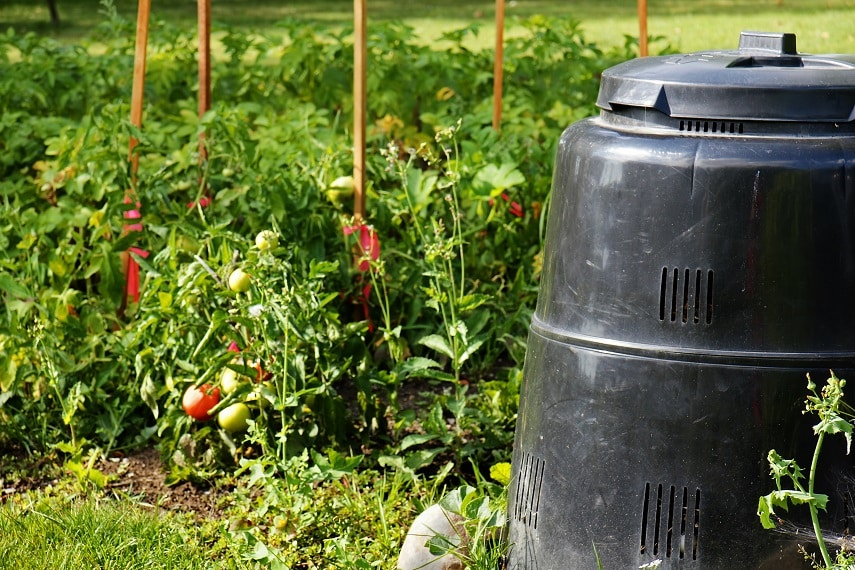Composting is a great way to turn food scraps and yard waste into healthy soil. It helps plants grow and reduces trash. But many people wonder, what type of compost bin should I use? There are many compost bin types. Each one works in a different way. This guide will explain the main compost bin types. You will learn how they work and what is best for you.
Why Use a Compost Bin?
A compost bin holds your food scraps and garden waste. It helps these materials break down faster. Without a bin, compost can take a long time to form. A bin keeps the compost neat and stops bugs or animals from making a mess.
Using a compost bin means less trash in landfills. It also gives you rich soil for your garden. Compost helps plants grow strong and healthy. So, a compost bin is useful and good for the Earth.

Credit: www.amazon.ca
Main Types of Compost Bins
There are many types of compost bins. Some are simple, and some are more advanced. You can choose one based on your space, budget, and how fast you want compost.
1. Open Pile Compost
This is the simplest way to compost. You just make a pile of leaves, food scraps, and grass outside. No bin is needed.
Pros:
- Very easy to start.
- No cost or tools needed.
- Good for large gardens.
Cons:
- Can look messy.
- Attracts animals and pests.
- Slower composting process.
This method works if you have lots of space and do not mind a messy pile.
2. Tumbler Compost Bin
A tumbler bin is a container you can turn or spin. It helps mix the compost inside. Mixing speeds up the composting process.
Pros:
- Easy to turn and mix.
- Faster composting time.
- Keeps compost clean and neat.
Cons:
- Usually costs more.
- Limited size.
- Needs manual turning.
Tumblers are great for small yards or patios. You can turn them every few days. This keeps the compost healthy and fast.
3. Stationary Bin
This bin stays in one place. It is usually a box made from plastic, wood, or metal. You add scraps to the top and take compost from the bottom.
Pros:
- Simple to use and build.
- Good size for most gardens.
- Helps keep pests away.
Cons:
- Mixing compost can be hard.
- May take longer to compost.
- Needs space in your yard.
This bin is good if you want something easy and steady.
4. Worm Compost Bin (vermicomposting)
This type uses worms to break down food scraps. Worms eat the scraps and turn them into compost called worm castings.
Pros:
- Works indoors or outdoors.
- Produces rich compost quickly.
- Good for small spaces.
Cons:
- Needs care and feeding of worms.
- Cannot add large food scraps.
- Needs a special bin.
Worm bins are perfect for people with little space. They need regular care but make great compost fast.
5. Electric Composters
Electric composters use heat and air to compost waste fast. They can turn food scraps into soil in days.
Pros:
- Very fast composting.
- Works indoors.
- Easy to use with buttons.
Cons:
- Expensive to buy.
- Needs electricity.
- May be noisy.
Electric composters suit busy people with small kitchens. They give quick compost but cost more.
How to Choose the Right Compost Bin
Choosing a compost bin depends on your needs. Think about these questions:
- How much space do you have?
- How much compost do you want to make?
- How fast do you want compost?
- Do you want to compost indoors or outdoors?
- How much time can you spend on composting?
- What is your budget?
For example, if you have a big garden and want simple compost, use an open pile. If you have a small balcony, a worm bin or tumbler works well.

Credit: www.theenglishgarden.co.uk
Tips for Successful Composting
No matter which bin you choose, these tips help:
- Mix green and brown materials.
- Keep compost moist, but not too wet.
- Turn or mix compost often.
- Avoid adding meat, dairy, or oily foods.
- Chop big scraps into small pieces.
- Keep compost warm for faster breakdown.
Good care makes compost faster and better.
Comparison Table of Compost Bin Types
| Compost Bin Type | Best For | Speed | Cost | Space Needed | Care Level |
|---|---|---|---|---|---|
| Open Pile | Large gardens, easy start | Slow | Free | Large | Low |
| Tumbler Bin | Small yards, fast compost | Fast | Medium | Small | Medium |
| Stationary Bin | Medium gardens, neat compost | Medium | Low to Medium | Medium | Medium |
| Worm Bin | Indoor, small space | Fast | Low to Medium | Very Small | High |
| Electric Composter | Indoor, quick compost | Very Fast | High | Small | Low |
Final Thoughts
Composting is easy and good for nature. Choosing the right bin helps you enjoy composting more. Think about your space, time, and budget. Then pick a bin that fits you.
Start small. Learn as you go. Composting can be fun and rewarding. Soon, you will have rich soil for your plants. And you will help the Earth stay clean.
Frequently Asked Questions
What Are The Different Types Of Compost Bins?
Compost bins come in various types. Stationary bins, tumblers, and worm bins are popular choices. Each has unique benefits.
How Does A Compost Tumbler Work?
A compost tumbler is a rotating container. It helps mix materials and speeds up composting by aeration.
What Is A Worm Bin?
A worm bin uses worms to break down organic waste. It’s ideal for small spaces and produces rich compost.
Are Stationary Compost Bins Effective?
Yes, they are effective. Stationary bins are great for large volumes and are low maintenance.
5 min read

